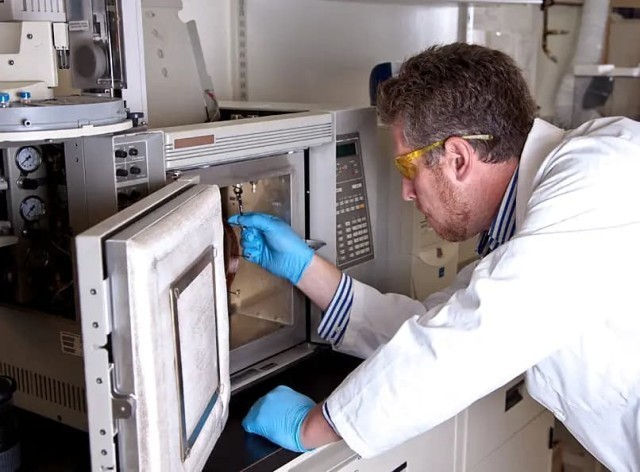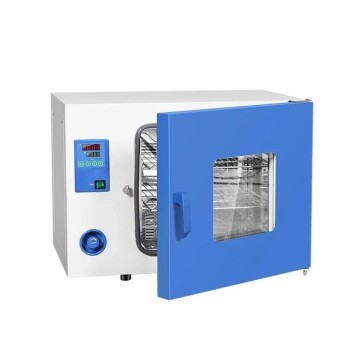What is Laboratory ovens?
Laboratory ovens are versatile pieces of equipment used in a variety of scientific and industrial settings. They are designed to provide precise temperature control and uniform heating, making them ideal for processes such as baking, curing, and drying various substances.
One of the main benefits of laboratory ovens is their ability to maintain precise temperatures. This is important in a wide range of applications, including research, manufacturing, and quality control. For example, in a laboratory setting, precise temperature control is essential for performing experiments and ensuring the accuracy of results. In manufacturing, consistent temperatures are necessary for processes such as drying and curing products.
In addition to temperature control, laboratory ovens are also known for their ability to provide uniform heating. This is achieved through the use of air circulation and heating elements that evenly distribute heat throughout the oven chamber. This is important for ensuring that the substances being heated are exposed to consistent temperatures, which can be crucial for achieving desired results.
Overall, laboratory ovens are essential tools that are used in a wide range of scientific and industrial settings. They provide precise temperature control and uniform heating, making them vital for processes such as baking, curing, and drying various substances.
Types of laboratory ovens
There are several types of laboratory ovens available, each designed for specific purposes and applications. Some common types of laboratory ovens include:
- Standard digital ovens: These are the most common type of laboratory ovens, and are primarily used for drying and heating processes. They provide precise temperature control and safety features, such as over-temperature protection and alarms.
- Vacuum ovens: These ovens operate under a vacuum, which allows them to reach and maintain lower temperatures than standard ovens. They are often used for drying and degassing materials, as well as for low-temperature baking and curing.
- Forced air convection ovens: These ovens use a fan to circulate heated air throughout the oven chamber, providing uniform heating and faster drying times. They are commonly used for processes such as drying, curing, and baking.
- Gravity convection ovens: These ovens use natural convection currents to circulate heated air throughout the oven chamber, rather than a fan. They are generally used for low-temperature baking and drying applications where circulation of air needs to be minimized.
Each type of laboratory oven has its own unique features and capabilities, and the most suitable one will depend on the specific needs of the application.
Gravity Convection Oven
Gravity convection ovens are a type of laboratory oven that uses natural convection currents to circulate heated air throughout the oven chamber. They are designed for applications where the use of a fan or other mechanical means of air circulation would disturb the thermal process, such as when processing lightweight materials or powders.
Unlike other types of mechanical convection lab ovens, gravity ovens do not use a fan to circulate heated air. Instead, they rely on perforated stainless-steel shelves to generate a natural air convection supply, which helps to achieve temperature uniformity without the use of blowers.
One of the main benefits of gravity convection ovens is their ability to operate quietly, making them ideal for use in labs and other environments where noise levels need to be kept to a minimum. They are also known for their energy efficiency and low maintenance requirements.
Forced Air Oven
Forced air convection ovens are a type of laboratory oven that uses a fan to circulate heated air throughout the oven chamber. The fan, also known as a blower, forces warm air around the oven chamber, creating a uniform distribution of heat. This helps to ensure that the substances being heated are exposed to consistent temperatures, which can be crucial for achieving desired results.
Forced air convection ovens work similar to a furnace, with hot air traveling through a duct system to create a uniform distribution of warmth within the chamber. This makes them ideal for a wide range of applications, including drying, curing, and baking.
One of the main benefits of forced air convection ovens is their ability to provide fast and efficient heating. The use of a fan allows them to heat up quickly and reach higher temperatures than gravity convection ovens. They are also known for their uniform heating capabilities, which make them ideal for applications that require precise temperature control.
Overall, forced air convection ovens are a versatile and reliable choice for a wide range of scientific and industrial applications. They provide fast and efficient heating, as well as precise temperature control and uniform heating, making them an essential tool in many labs and production environments.
Gravity Convection vs Forced Air
Gravity convection ovens rely on natural convection currents to circulate heated air, rather than a blower fan. As hot air expands and becomes less dense, it naturally rises, creating convection currents that circulate the heated air throughout the oven chamber.
On the other hand, forced air convection ovens use a blower fan to circulate heated air around the oven chamber. Like a furnace, hot air travels through a duct system, creating a uniform distribution of warmth within the chamber. This allows forced air convection ovens to heat up more quickly and reach higher temperatures than gravity convection ovens.
The main difference between gravity convection ovens and forced air convection ovens is the way they circulate heated air throughout the oven chamber. Gravity convection ovens rely on natural convection currents, while forced air convection ovens use a blower fan. Each type of oven has its own unique features and capabilities, and the most suitable one will depend on the specific needs of the application.
Vacuum Oven
Vacuum ovens are a type of laboratory oven that is designed to remove moisture, gas, and other potentially volatile chemicals from items while preventing reactions. They are often used for drying and degassing materials, as well as for low-temperature baking and curing.
The primary mechanism for drying in a vacuum oven is the vacuum chamber, which operates under a vacuum to reduce pressure. This reduction in pressure lowers the boiling point of most substances, allowing liquids to evaporate at lower temperatures. This is particularly useful for drying materials that are sensitive to high temperatures or that would otherwise be damaged by the heat.
Vacuum ovens are also known for their ability to prevent reactions between substances. Because they operate under a vacuum, there is little or no oxygen present in the oven chamber. This can be beneficial for preventing oxidation or other types of reactions that might otherwise occur in the presence of oxygen.
How to Choosing Your Laboratory Oven
It's important to carefully consider your needs and choose the right type of laboratory oven for your application. There are several types of laboratory ovens available, each designed for specific purposes and applications.
Gravity convection ovens are a good choice for applications where the use of a fan or other mechanical means of air circulation would be disruptive or undesirable. They offer a reliable and energy-efficient way to achieve temperature uniformity without sacrificing performance.
Forced air convection ovens, also known as mechanical convection ovens, are a versatile and reliable choice for a wide range of scientific and industrial applications. They provide fast and efficient heating, as well as precise temperature control and uniform heating.
Vacuum ovens are an essential tool in many scientific and industrial settings, providing a reliable and effective way to dry, degas, and cure materials. They offer a range of benefits, including the ability to operate at low temperatures and prevent reactions.
High-temperature ovens are designed to operate at very high temperatures, making them suitable for applications such as sintering and heat treating. They are often used in the pharmaceutical industry and other labs that require high-temperature processing.
Overall, it's important to understand the different functions and capabilities of different types of laboratory ovens, and to choose the one that best meets your needs.
The main purpose of laboratory oven
Laboratory ovens are used for a variety of purposes, including drying or dehydrating, sterilizing, annealing, and evaporating. Here's a brief overview of each of these functions:
- Drying or dehydrating: Removing moisture from samples is a common use for laboratory ovens. This can be done to preserve samples, prepare them for analysis, or simply to remove excess moisture that might interfere with the intended use of the sample.
- Sterilizing: Laboratory ovens can be used to sterilize lab equipment and other items by removing or destroying bacteria or microorganisms. This is often done using high temperatures or chemical disinfectants.
- Annealing: Annealing is the process of removing internal stresses and toughening metal or glass by heating it and allowing it to cool slowly. Laboratory ovens are often used for this purpose, as they can provide precise temperature control and uniform heating.
- Evaporating: Laboratory ovens are also used to evaporate excess solvents, such as water, from a solution to produce a concentrated solution or measure their melting point. This can be done by exposing the solution to heat and allowing the solvents to evaporate.
Related Products
- Laboratory Vacuum Tilt Rotary Tube Furnace Rotating Tube Furnace
- Vertical Laboratory Tube Furnace
- Laboratory Scientific Electric Heating Blast Drying Oven
- 1200℃ Controlled Atmosphere Furnace Nitrogen Inert Atmosphere Furnace
- 1400℃ Controlled Atmosphere Furnace with Nitrogen and Inert Atmosphere
Related Articles
- Electric Rotary Kiln Pyrolysis Furnace: A Comprehensive Guide to Pyrolysis Technology
- Advanced Laboratory Furnaces: Box, Muffle, and Tube Options for High-Temperature Applications
- Optimizing Industrial Processes: Rotary Kiln and Laboratory Furnace Solutions
- Rotary Furnaces: Advanced Materials Processing and Applications
- Introducing the Lab Vacuum Tube Furnaces














